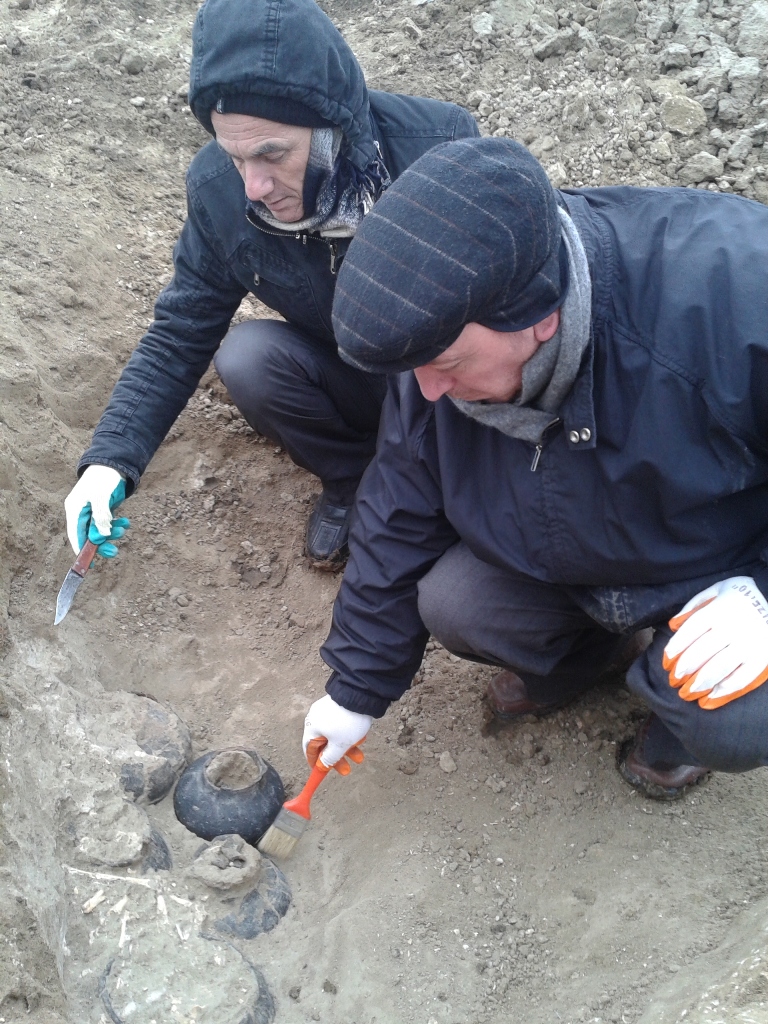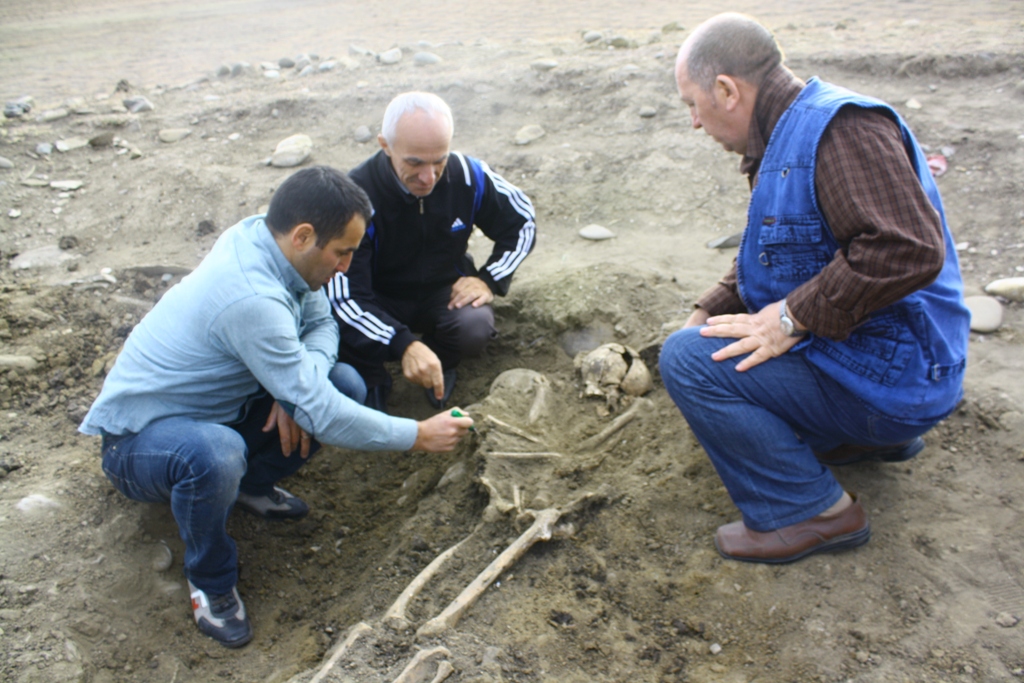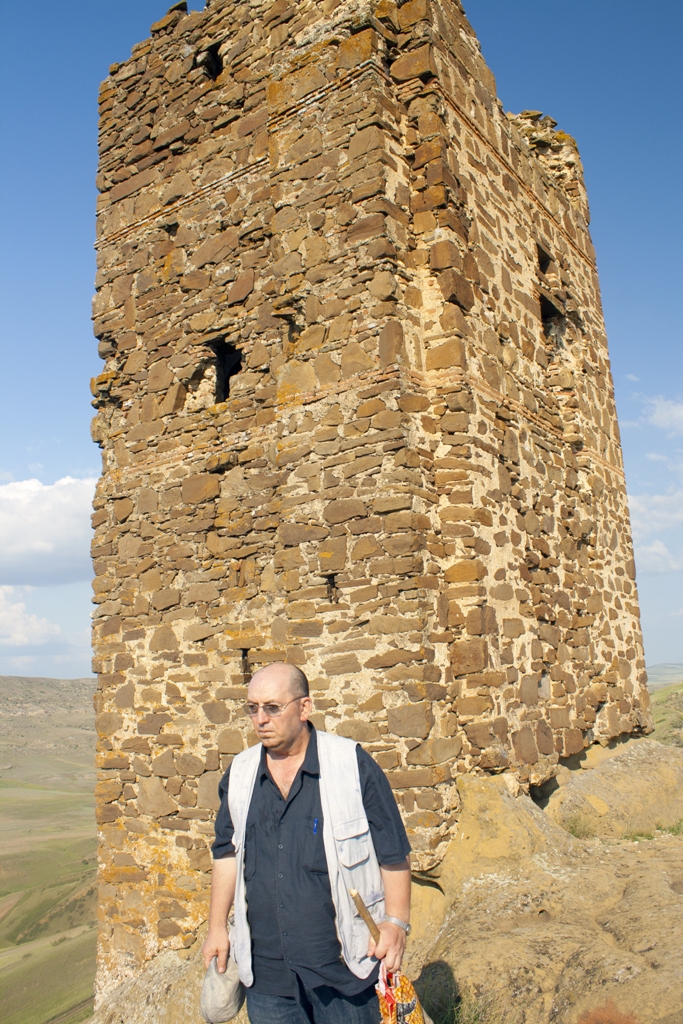Institute of Archaeology and Ethnography of Azerbaijan National Academy of Sciences (ANAS) organized scientific expedition in the area of “Jeyranchol” (Az: Ceyrançöl) and Christian (Caucasian Albanian, hereinafter “Albanian”) temples in August 2008 with the purpose of research in very difficult conditions.
In the above-mentioned area besides monastery-architectural monuments there are also tens of complexes of cave-temples and in majority of them frescos were decorated reflecting the themes of Christianity.
First of all, it should be noted that the placement of the compositions (komponovka) is not harmonized with the interior and these compositions were not arranged in a completed plot line, they consists of religious scenes and characters that were drawn to the interior in scattered form without any calculation. This fact confirms once more that many of these caves had existed before and even in some blank spaces cross signs were drawn in different size and forms. One of these crosses (drawn in great size) refers to the Russian Orthodox (Pravoslavic) Church. Probably he painter of frescos is of Russian origin. Though certain traditions are observed in the decoration of compositions, generally they are decorated in unprofessional manner. The rule of “perspektiva” (visual perspective) was not observed in volume-space environment, volume-spatial structure of objects of compositions.
To speak about the history of the frescos we should first speak about the history of fresco art. As it is known, water colors are widely used in frescos. Nontransparent watercolor mixed with white paint was widely known in Ancient Egypt and ancient art, as well as in Europe and Asia during the Middle Ages. Use of pure watercolor not mixed with white paint has been used since the 15th century. Since 15-17th centuries watercolor started to be used in the painting of engraving, draft, painting and fresco shetches.
Of course, the second group of watercolor – the pure one was used in investigated frescos. After it special enamel (varnish) was used on them. One of the attractive themes in frescos was the theme of “Mysterious night” wellknown in Christianity.
In the Middle Ages and modern period this theme was used in dozens of paintings. Of course, the most grandiouse one belongs to Leonardo da Vinci.
The number of characters describing apostles of the Jesus Christ in the composition about aforementioned theme in the investigated object is not 12, it is fewer than it. Since the surface of the cave interior was not so large, it was not available for use of multifigured compositions.
According to the general results of the conducted research the date of painting of frescos can be reffered to the first half of the 19th century (according to their technical and colors’ qualitative characteristics).
The architectural shape-structure characteristics of the temple-monasteries in this area bears resemblance to the Albanian temples in the territory of Azerbaijan. However, in this area we still need wide range investigation of expedition consisting of many experts specialized in diverse historical period and fields
Imas A. Hajiyev
Ph. D., associate professor.
Member of Azerbaijan Union of Artists, Union of Designers of Azerbaijan, Azerbaijan
Scientific worker of the ANAS Institute Architecture and Art








